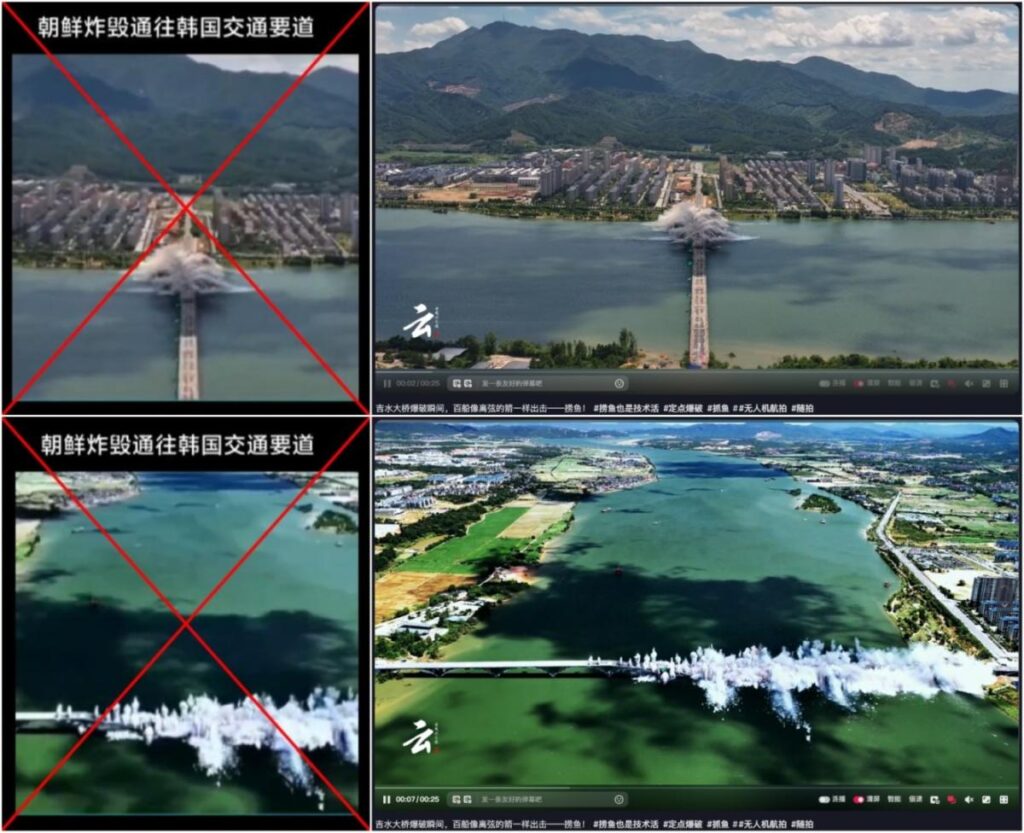After North Korea’s decision to destroy roads and railways connecting it to South Korea on October 15, 2024, misleading information regarding the event circulated on social media platforms, particularly X and TikTok. A video that claimed to depict North Korea’s destruction of key transport routes was actually footage of controlled demolitions of bridges in various regions of China. This false narrative can be traced back to North Korea’s official communication, where the regime deemed the severing of links with the South as an “inevitable and legitimate measure” based on their constitutional framework, which characterizes South Korea as a hostile entity. Tensions have been escalating dramatically between the two Koreas, particularly following a January 2024 speech by North Korean leader Kim Jong Un, who labeled South Korea as North Korea’s “principal enemy” and dismissed any notions of reconciliation.
The misrepresented video included clips of earlier planned demolitions in China’s Jiangxi and Hunan provinces, specifically from September 2021 and July 2023. Falsely labeled as evidence of North Korean military action, the clips showcased controlled demolitions rather than any current military conflict. The misleading footage caught the attention of various internet users, leading to significant shares on Douyin, the Chinese counterpart of TikTok, and other social media. This development surfaced after North Korean media confirmed the demolitions, presenting them as part of their military fortification strategy against South Korea. The imagery suggesting an escalation in conflict was not reflective of actual events occurring at the moment but rather a manipulative amalgamation of historical video clips.
Upon conducting reverse image searches and keyword investigations, it was discovered that one segment of the circulated video depicted the Jishui Bridge in Jiangxi Province. This bridge was responsibly demolished due to structural integrity concerns, with videos capturing the event published on Douyin. The local context surrounding these demolitions further emphasized their planned nature and disassociation from South Korean relations. The responsible communication of the demolition project by the China Communications Construction Company corroborated the authenticity of the Jiangxi footage, showcasing the regulated procedures that are typically followed during such events.
Another piece of video evidence included in the misleading post originated from a demolition of the Yandian Bridge in Hunan province, carried out in September 2021. Misuse of this footage similarly misrepresented the reality of ongoing events. Local authorities in Changde City disclosed the demolition’s necessity for future projects, which again underlined the legitimate and planned nature of these demolitions. Contextualizing these events as routine infrastructure projects rather than military actions was crucial for understanding the scope of the misinformation being circulated.
The spread of misinformation was amplified by the broader political climate and North Korea’s escalated rhetoric against South Korea. As the North ramped up its military posturing and redefined its stance on potential reunification, the selective sharing of outdated and contextually detached footage received a broader audience. Viewers were led to misconstrue the narrative of destruction as a part of escalating conflict, creating an atmosphere filled with fear and uncertainty regarding North Korea’s intentions.
In summary, the erroneous portrayal of bridge demolitions in China as attacks by North Korea highlights the complexities of information dissemination in a politically charged environment. The misrepresentation of mundane infrastructure demolitions as statements of hostility from North Korea reveals how easily misinformation can be propagated, particularly in an era where visual content holds substantial sway over public perception. Understanding the origins of the shared footage, combined with the significance of context, is essential in countering misleading narratives and promoting factual dissemination of information amid rising geopolitical tensions.

